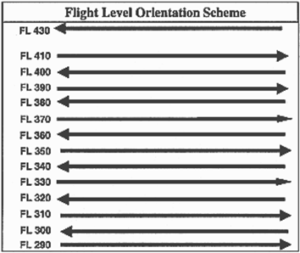RVSM Frequently Asked Questions FAQ
RVSM Frequently Asked Questions, RVSM FAQ – Have a question that is not listed below? Contact us and we’ll try to help!
I heard the FAA recently changed the RVSM LOA process?
- On August 19, 2016, RVSM authorization was revised for all Operators. The FAA removed a lot of the RVSM Maintenance Program requirements and have published Advisory Circular 91-85A to reflect these changes. On January 22, 2019, RVSM authorization was revised again for all Operators that have aircraft which are ADS-B out equipped and have published Advisory Circular 91-85B in regards to the new 14 CFR 91, Appendix G, Section 9. If you are only operating within domestic airspace and not overflying other countries and / or no further than 12nm from the shoreline, you will not need a RVSM LOA or OpSpec or MSpec if the aircraft is ADS-B out equipped. All of the other RVSM requirements remain in effect (i.e. pilot training, height monitoring, maintenance etc.) If you are operating outside of US domestic airspace, you will probably need a RVSM LOA or OpSpec or MSpec for RVSM airspace. From Section III, Discussion of Final Rule, FAA Document Number 2018-27401 page 3,: “The FAA notes that aircraft equipped with qualified ADS-B Out systems may conduct operations in airspace where the FAA has ADS-B coverage sufficient to confirm RVSM height-keeping performance, under the provisions of new Section 9 of Appendix G, immediately upon the effective date of this rule. However, an Operator may still operate with an authorization issued under the provisions of Section 3 of Appendix G if its aircraft is not equipped with a qualified ADS-B Out system. The FAA also notes that if a foreign country requires a specific authorization to operate in RVSM airspace, as specified in ICAO Annex 6, an operator may need to seek authorization under the provisions of Section 3, even if it meets the provisions of Section 9.” Contact us to obtain your RVSM LOA / Operation Specifications with these new changes.
Will I need to interact with the FAA during the RVSM approval process?
- The FAA expects and requires the Operator’s involvement in the approval process. You are required to submit your RVSM Program manuals and supporting documentation after it has been prepared by Wilding Air. Also, you may need to communicate directly with your FSDO to resolve open issues during the review process which Wilding Air will help you with as necessary.
I just purchased a RVSM approved aircraft, how do I transfer the LOA?
- The previous Operator’s LOA becomes invalid the day the aircraft Operator changes. It must be returned to the FAA issuing office immediately. LOAs are non-transferable as you can not change the name of the Operator. Therefore, a new RVSM application package must be submitted to your local FAA office for approval. The FAA treats this application as a brand new RVSM submission.
What is WATRS?
- WATRS stands for the West Atlantic Route System. The West Atlantic Route System are based upon RNP 10 navigation specifications to allow closer spacing of aircraft. The WATRS airspace has been fully implemented as of October 20, 2011. If you plan on operating in Oceanic airspace in this area above FL280 you will need to have your RVSM manuals updated or revised.
What is NAT?
- NAT stands for the North Atlantic Tracks. The North Atlantic Tracks are based upon MNPS navigation specifications, now referred to as NAT-HLA, to allow closer spacing of aircraft. If you plan on operating to Greenland, Iceland or Europe, your RVSM Program Manual must contain this information.
Must an aircraft be equipped with TCAS in order to operate in RVSM airspace?
- No. The regulations that provide TCAS equipage requirements do not relate TCAS equipage to RVSM; however, If an aircraft operating in RVSM Airspace is equipped with TCAS II it must meet TSO C-119b (Version 7.0) or later version unless otherwise authorized.
Is a validation flight the same thing as a Height Monitoring Flight?
- No. A validation Flight is a flight that is observed and inspected by FAA inspectors prior to determining what operational approvals will be granted if required.
Are Validation flights required for RVSM Approval?
- In most cases, No. The review of the RVSM Data Package and related supplemental material should be sufficient in determining the eligibility of the aircraft; however, the Inspector may choose to accompany the Operator on a flight. Typically, this can be performed on a routine flight.
What is a RVSM Height Monitoring Flight?
- RVSM Height Monitoring is the method to confirm height keeping performance of aircraft for Air Traffic Control to maintain safe separation within RVSM airspace. Height Monitoring is required every 2 years or 1000 flight hours, whichever is greater. Height Monitoring should be competed within six months of issuance of your RVSM LOA unless previously completed and documented by a past Operator (in the past 2 years or 1000 flight hours). Some of the RVSM Height Monitoring options are (we can help arrange this):
- Over fly one of the AGHME (Aircraft Geometric Height Measurement Element) constellations, which is a no cost service. If your aircraft is equipped with a Mode S transponder, the AGHME can simply be flown over. AGHME constellations are currently located in Wichita KS, Atlantic City NJ, Phoenix AZ, Portland OR, Ottawa ON and Lethbridge AB. AGHME Locations and Operational Status FAA link.
- Complete a “GMU” (GPS-based Monitoring Unit) flight which Wilding Air can arrange. The technician performing the monitoring flight carries onboard a small, portable GPS unit with two antennas which will suction cup to two interior windows. The GMU flight requires you to fly above FL290 and hold LEVEL for 30 minutes while the GPS unit records flight data.
- Aircraft equipped with qualified ADS-B out systems will be height-monitored during normal operations at RVSM altitudes when operating in airspace where sufficient ADS-B data is available to the FAA to determine RVSM performance. At this time, NAARMO is not automatically processing ADS-B height monitoring results for all flights. US operators seeking height monitoring and who are unable to utilize an AGHME location can request ADS-B results by providing flight details using the ADS-B Monitoring Request form (PDF).
Do I need to renew my LOA?
- After 24 months, LOAs issued prior to February 6, 2006 are invalid and may require a new approval application submitted to the FAA. LOAs issued after February 6, 2006 are not required to be renewed every 24 months.
What is the FAA Inspector guidance on Letters of Authorization (LOA)?
- FAA Order 8900.1, Volume 4, Chapter 1, Section 5, Paragraph 4-109G titled “RVSM Authorization Process and Policy”.
If I have Part 135 Operations Specifications (OpSpecs) granting me RVSM authority, am I required to also have an LOA when I conduct Part 91 Operations?
- No, providing that the aircraft is operated under the conditions and areas of operations listed within the 14 CFR 135 OpSpec and the aircraft is operated under the Operator name listed within the OpSpecs.
